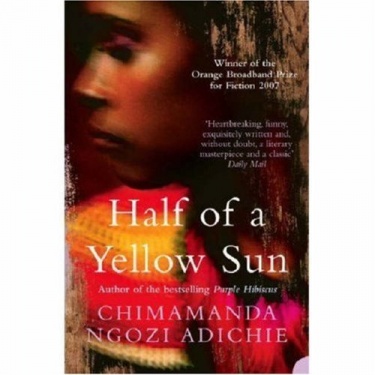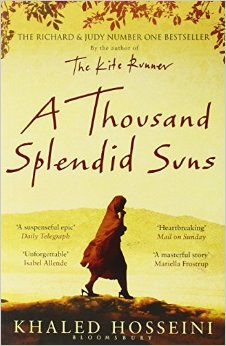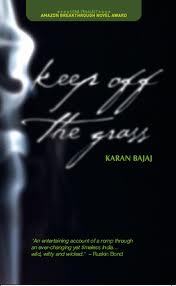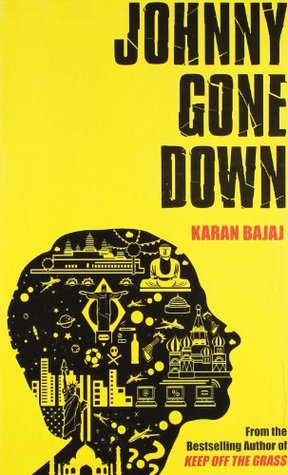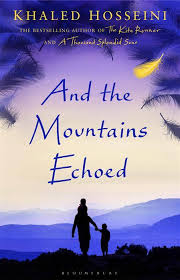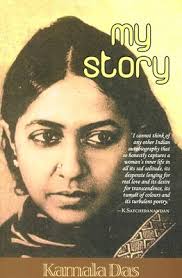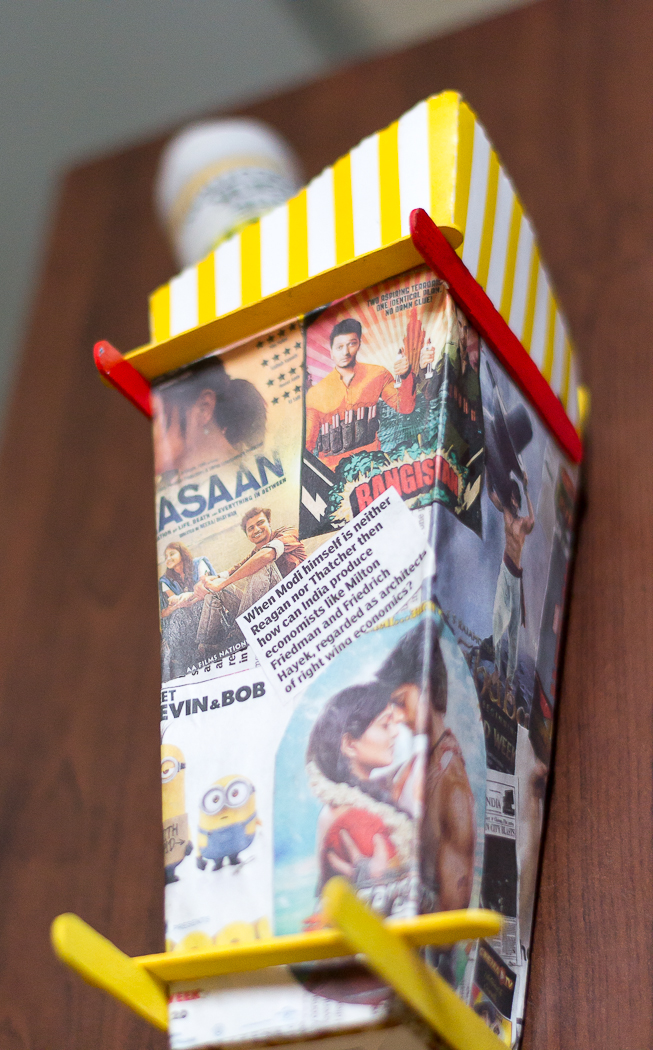Half of a Yellow Sun
Historiographic metafiction
Alfred A. Knopf
January 15, 2007

A lyrical, mysterious tale of misunderstanding and pain, echoing through the years. At its dark heart, it demonstrates how wall engulfed places can have multiple and major consequences, meaning that everything can change in a single day
The world has to know the truth of what is happening because they simply cannot remain silent while we die. – Chimamanda Ngozi Adichie
Chimamanda ‘s novel illuminates the reality and disintegration of Nigerian life in wartime during the 1960s. The Biafran war waged between 1967-70 was Nigeria’s politically and ethnically charged battle of North vs. south, specifically the south eastern region, where the unsuccessful fight for secession left 1 million civilians dead. Half of a yellow sun describes the Biafran flag; it symbolized the struggle of its people for independence and a brighter tomorrow.
Red was the blood of the siblings massacred in the North, black was for mourning them, green was for the prosperity Biafra would have, and, finally, the half of a yellow sun stood for the glorious future.
The novel features the daily lives of Igbo people of different social levels from the well educated and bourgeois to illiterate country peasants. Adichie’s characters are strongly defined individuals whose personal lives and interrelationships go through fragmentation and change, their rise and fall in violent tandem with the country’s horrific civil war.
There are some things that are so unforgivable that they make other things easily forgivable..
Although the story centres on the love-hate conflict between twin sisters Olanna and Kianene, moving from jealousy, betrayal, and distrust, the more compelling tale belonged to Ugwu – the good natured, loyal houseboy – who rose up through better education, but miserably fell when, conscripted in the army, his vicious regrettable action would leave him self-loathing, morally decayed and damaged forever.
This was the most visceral war novel I’ve read in a while, on a region not well known to me. Adichie’s voice is powerful, genuine, resonant in the narrative of Biafra’s painful victory and defeat; in the story of the resulting broken lives, and a country’s blood -soaked odyssey.
A Thousand Splendid Suns
Fiction
Riverhead Books
2007

Heartbreaking. Horrific. Eye opening. Breathtaking.
All of these and more describe this beautifully written story that follows the journey of 2 women as their beloved Afghanistan, rich in history and culture, is embroiled in war, destruction and a struggle to be reborn.
This is a work of fiction which is beautifully woven using many threads of both harsh and loving reality. I cannot believe that it could be possible for any reader to get through this book without shedding a tear. I shed many.
It is about the collision of the life-paths of two women who come from very different family backgrounds, but become the wives of the same, cruel husband in Kabul. They form an unlikely, strong, and loving, alliance.
The story takes us through over three decades of recent Afghan history, through the many ruling regimes and conflicts during those times, and the consequences of what is termed as collateral damage suffered by many during the battles between the many factions involved.
“One could not count the moons that shimmer on her roofs, or the thousand splendid suns that hide behind her walls.”
I honestly feel like no review I could ever write would do this book justice. I loved every single page of it, I read this in a single seating and finished reading it at 4 in the morning, um yes because I simply couldnt put it down.
The theme of A Thousand Splendid Suns revolves around family, friendship, love, sacrifice and violence. This book was split into four parts: The first part was about Mariam, an illigitemate child who lived on the outskirts of Herat with her bitter mother. A series of unfortunate events faced by Mariam were heart-wrenching and indescribably painful. The second part was about Laila, who lived down the street from Mariam and her husband (yes, forced marriage). Laila character was completely different from Mariam. She’s an educated girl, cheerful, outspoken and brave. The relationship between Mariam and Laila became intertwined in the third part. This part also depicts the conditions during the Taliban reign, who has risen to power and imposed so-called Islamic rules on the Afghan population; prohibiting women from appearing in public without a male relative, girls banned from going to school, the destruction of all types of entertainment and arts, the burning of books except for Quran and so forth. The last part shows the condition of post-Taliban reign from Laila’s perspective (Ha mana Maryam? Heheh)
I liked how Hosseini draws the picture of each and every scene to the extent that you feel that you’re there. I’ve created a mental image of everyone in the story, and the violence is truly devastating. At the same time, this book is also beautiful, it pulled me in from the first page. Mariam and Laila’s stories were both so compelling on their own, and when they came together, the threads of the story became even more intricate and powerful. I felt so much for these characters after everything they had been through and I desperately wanted them to be happy.
Overall, it was such a gripping tale, highly recommended.
“Love was a damaging mistake, and its accomplice, hope, a treacherous illusion. And whenever those twin poisonous flowers began to sprout in the parched land of that field, Mariam uprooted them. She uprooted them and ditched them before they took hold,”
keep off the grass
Fiction
HarperCollins
2008

Keep off the Grass is the debut novel of Karan Bajaj.Being Bajaj’s first venture into writing this book is a well crafted read.
“Books give you a funny kind of solace, that you are not alone, and someone, somewhere thinks exactly like you, and articulates it better.”
A direct quote from the book. These words of writer touched my heart, something which I can relate to.
This book tries to hit the lighter notes of life.Author beautifully tries to portray evasive feeling of contentment that all of us chase in silent, yet often delusional ways. It is a pretty humorous reflection of the trials and tribulations of the modern-day youth, but at the same time, it pushes boundaries and forces one to introspect.
The main plot revolves around the most coveted B-school campus, IIM Bangalore. Being an alumni of same institution Karan Bajaj portrays vivid pictures without fail. Facts and situation seems real and he puts up an intriguing story-line.
Unlike Chetan Bhagat’s polite forays in the B school, Bajaj’s tale is high on risk and marijuana.This book doesn’t talk about rich legacy of IIM’s but it’s about liberation of our acts and thoughts. The protagonist Samrat Ratan’s quest for identity lands him up in prison. Samrat experiences of meditation in Himalayas, partnering with a cannibal, meddling with fearsome Raja Bhaiya.
This story is all about self realization. How a Yale graduate working in an Investment Banking firm gives up his job and comes to study in India at the prestigious Business School IIM Banglore.This book talks about how our deeds affect our happiness and how important its to find real meaning of life.
a house in the sky
Memoir
2013

A House in the Sky is the compelling account of the then-27-year-old Canadian’s 15 months in brutal captivity as a hostage, along with Australian photographer Nigel Brennan, at the time her former lover.
The dramatic and redemptive memoir of a woman whose curiosity led her to the world’s most beautiful and remote places, its most imperiled and perilous countries, and then into fifteen months of harrowing captivity—an exquisitely written story of courage, resilience, and grace.
Written with writer Sara Corbett, an experienced journalist and talented wordsmith, the book is a wrenching and often difficult description not only of the beatings, rapes and torture her captors inflicted upon Lindhout, but also of the incredible strength and resilience she exhibited during her imprisonment, and after.
Nobody instructed the young journalist to visit Somalia in the middle of a civil war. No editors demanded her coverage; her only steady job when she landed in Mogadishu was a regular column for the Red Deer Advocate, a small newspaper in central Alberta. When news broke that a 27-year-old freelancer had been kidnapped, some veteran correspondents asked each other why the rookie threw herself into such danger.
Held hostage for 460 days, Amanda converts to Islam as a survival tactic, receives “wife lessons” from one of her captors, and risks a daring escape. Moved between a series of abandoned houses in the desert, she survives on memory—every lush detail of the world she experienced in her life before captivity—and on strategy, fortitude, and hope. When she is most desperate, she visits a house in the sky, high above the woman kept in chains, in the dark, being tortured.
Today, Lindhout struggles with nightmares, sometimes wondering if she’s still in Somalia when she wakes up, fighting her fear of men and of closed spaces. Yet, since her release, she’s founded the Global Enrichment Foundation, a non-profit that supports Somalian and Kenyan women who need help and education. She has even returned to Somalia, moderating a panel in which a former Somali militant participated.
jhonny gone down
Thriller,Fiction
Harper Collins
2010
324

From the pen of Karan Bajaj, here is a heart gripping story,a thriller which keeps your head hooked till the very end.
Karan Bajaj an Indian-English writer had phenomenal success with his first book “Keep off the grass”. His second book “Johnny Gone Down” portrays a man (Nikhil) set out on a ‘never before’ journey. From experiencing ups and downs in a sinusoidal manner, Karan tells the story about how Nikhil Arya, initially MIT graduate, falls. Blame his destiny or his surprisingly strange decisions.
And the mountains echoed
Fiction
Riverhead Books

And the Mountains Echoed delves into the bonds between siblings. The storylines span across families, history, and continents. While the book focuses, once again, on the myriad of relationships within families, And the Mountains Echoed is a definite departure from Hosseini’s previous two books.
A brother torn from his sister by a cruel twist of fate at only seven years of age. A caretaker drawn into the life of his enigmatic employer, a recluse with a large amount of riches. A repressed daughter who dates her mother’s old flame, setting inevitable consequences into motion. In his new 400-page novel, And The Mountains Echoed, Khaled Hosseini does not tell the story one of character, of two characters, or of three – he delves into several generations. He takes apart the threads that tie us together and examines each string, sifting through the tapestry to find our souls.
Family. Hosseini’s narrative travels around the world in And the Mountains Echoed, from Afghanistan to France to the United States to the Greek island Tinos. Despite the broad scope of the story, there’s one theme that brings it all together: family. Comprised of several vignettes, each chapter of the book provides a snapshot, and sometimes a full on photo album, of a character’s life. A minor character in one chapter may be the protagonist of another, while the consequences of various events are viewed in a plethora of perspectives. Betrayal, sacrifice, jealousy, love, and essentially the entire gamut of emotions encompass the story as it gradually expands outward. Within the first 140 pages I felt tears prick the back of my eyes twice, a testament to the strength of Hosseini’s pathos.
His writing cuts deep like a sword and spreads details like a fine knife at the same time. Unlike his previous novels The Kite Runner and A Thousand Splendid Suns, And the Mountains Echoed travels from one time period to the next without much linearity. While confusing at times, especially when done without a proper transition, Hosseini captures the most important parts of every new setting in a way that appears effortless. In one passage he describes a character’s profession as a plastic surgeon and in the next he portrays the arbitrary yet powerful effect of beauty. While some of the stories within his latest book lack any sense of immediacy, for the most part they manage to entice with a tamed energy, mastered by Hosseini after years of practice.
Marketed as adult fiction, And the Mountains Echoed will appeal to readers of all ages and walks of life. Khaled Hosseni has worked as a doctor, as a Goodwill Envoy in his native country Afghanistan, and for the past ten years or so, as a writer. His experience in these intersecting areas enriches his writing with subtle particulars lacking in other works of historical fiction. Readers are only left to wonder:
My story
Autobiography
Sterling Publishers
February 1, 1973

My Story is one of the most popular and controversial autobiographies by an Indian author.Kamala Das has a deft and confident writing style with powerfully effective use of imagery.
Disturbing, poignant and tugging all at the same time – My Story is chapters from real life of Kamala Das.
Bold, provocative,flamboyant, and controversial are some of the words that are associated with the writer. There is no denying that Das ruffled several feathers by converting to Islam at the age of 65;or by making several dents in the mound society had set for women in the 1960s. She wrote about love that was amorous, frank and devoid of compunction at a time when poets/writers, especially women, were expected to romanticize all matters of the heart.
Born with skin not so fair–a dusky complexion to be precise, Kamala portrays herself as an inquisitive child who faced the triggers of race especially when India was gripped by the British imperialists. Brought up in convent schools Kamala faced discrimination at an early age when the word “racism” probably did not enter her vocabulary. Struggling through her life a midst the parochial, patriarchal society, Kamala had to submit when she had to marry an almost brutal man against her wish, that too, at the tender age of sixteen.
Kamala makes an attempt to find happiness in the world of her own–the world inhabited by the muses of literature enabling her in poetic and prosaic compositions. It will be wrong to say that she found bliss only in the world of creation. This is because, frustrated and exasperated by husband’s treatment and doomed in an unhappy marital bond, Kamala determines herself not to be tied up by the established norms of Indian society.
The novel also predominates with the metaphor of disease and sickness that she herself undergoes, along with her eldest who seem to be a chronic patient, falling prey to the tentacles of grave diseases fearing impending death but miraculously surviving with care and treatment. The symbols of illness is a portrayal of aberration in her life–a life that is devoid of peace and tranquility, a life that is forever rocking in the sea of turbulence, seeking an anchor but finding none, strives to stay afloat in those disturbed waters of turmoil and trepidation.
Kamala Das has been a controversial figure. After agreeing to the fact that ‘My Story’ is her autobiography, she later called some chapters as mere outburst of her imagination.
Quote from My Story:
“Today at Nariman Point the tall buildings crowd one another. But when I was young and in love with a grey-eyed man it was a marshy waste. We used to walk aimlessly along the quiet Panday Road or cross the Cuffe Parade to walk towards the sun. We did not have a place to rest. But in the glow of those evening suns, we felt that we were Gods who had lost their way and had strayed into an unkind planet..”
Newspaper holder
A newspaper holder made using pop corn box bought at the theater,newspaper boy is put to task.
Here is an easy to make newspaper holder. Every morning when I used to open my main door, I would find newspaper lying on the ground.While watching a movie last weekend, suddenly an idea occurred to me.Why not use the popcorn box to make newspaper holder 🙂
TRY IT OUT:
Take popcorn box of any size.And assemble old newspaper with bright and beautiful images of your choice.
As its a newspaper holder I decided to make a collage and stick to the box.And as I had watched movie few days before so I chose to make a Bollywood movie collage.
Chose some of the recent movie advertisement pictures.Once the collage was complete I colored few Popsicle sticks and glued it to the box to give it a beautiful look.
Give it a try and put your newspaper boy to work 🙂 🙂






